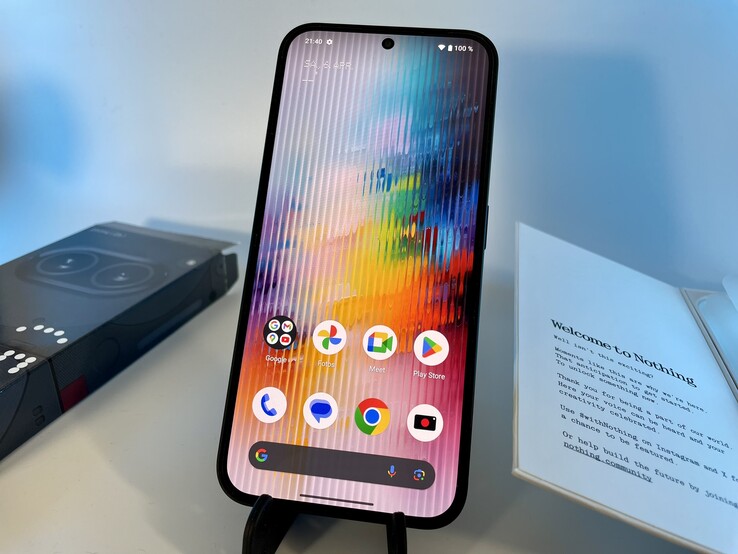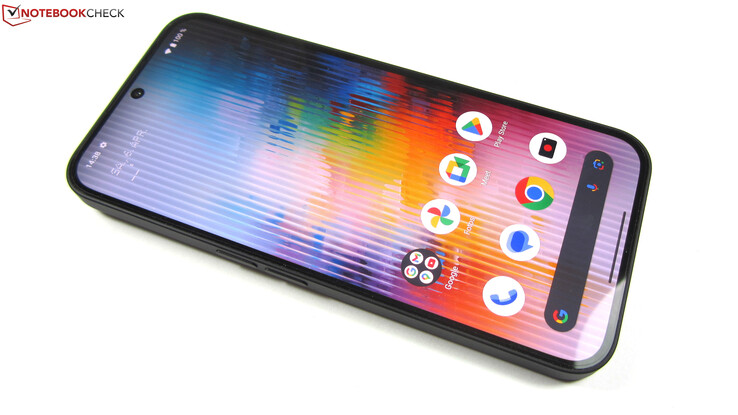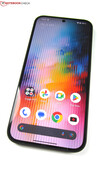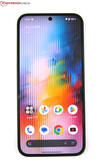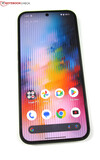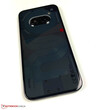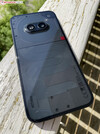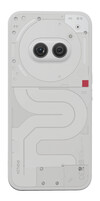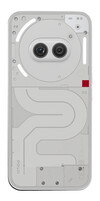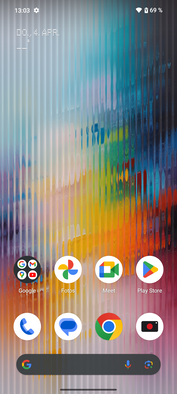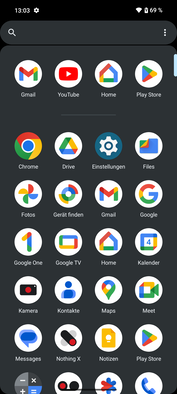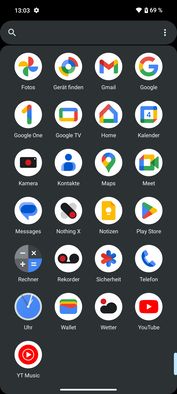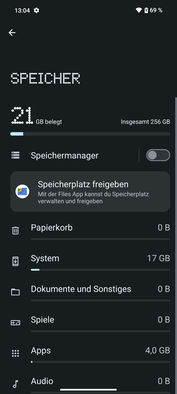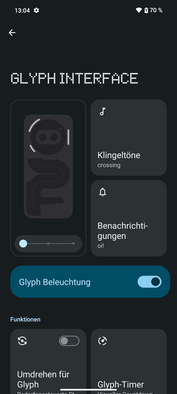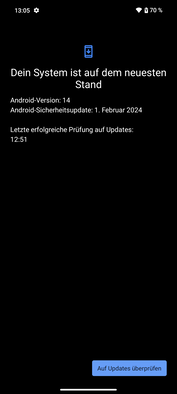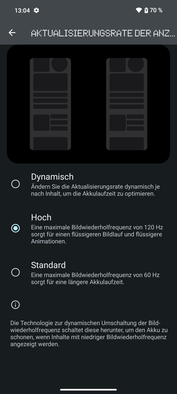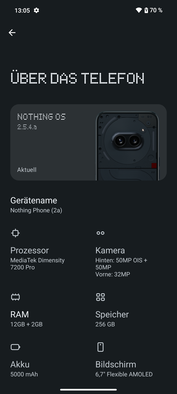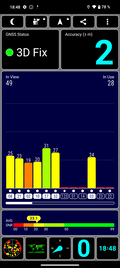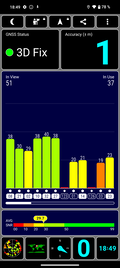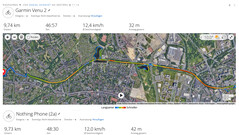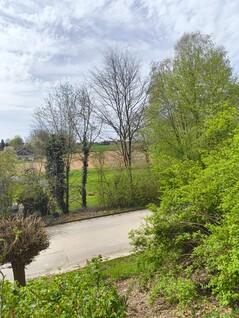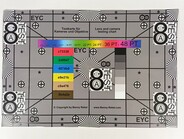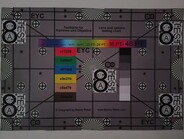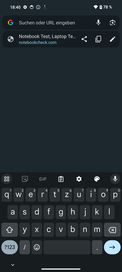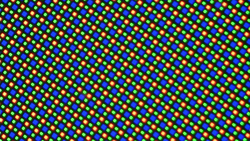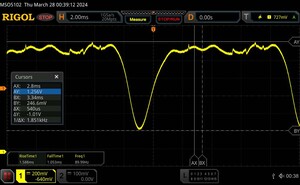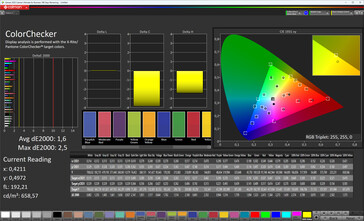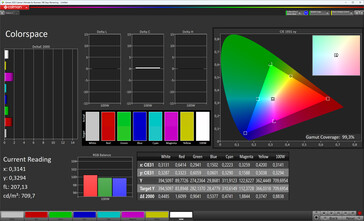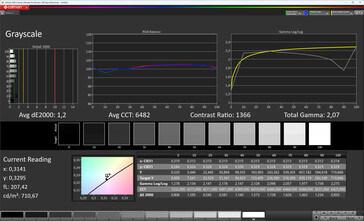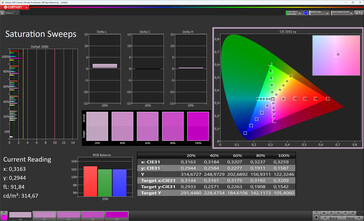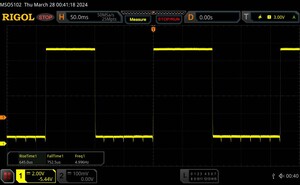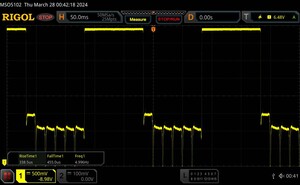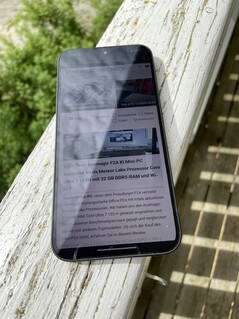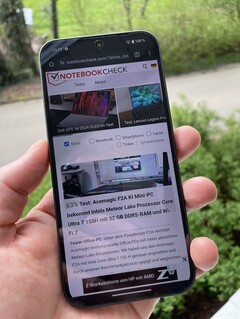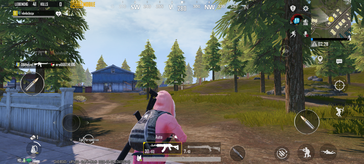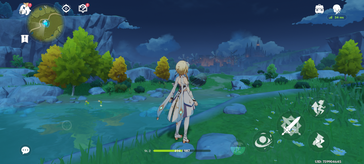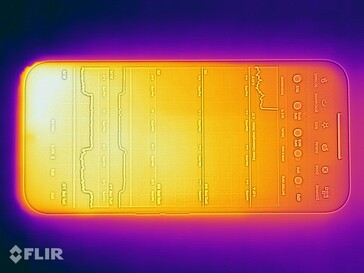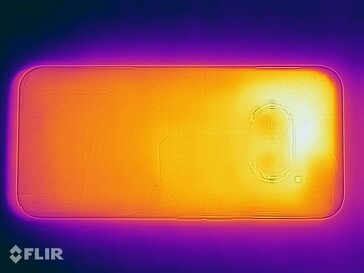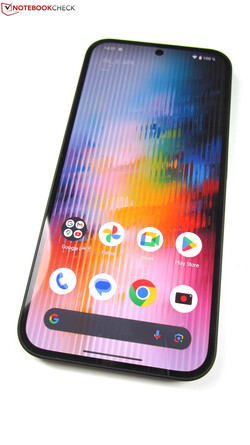Nothing Phone (2a) Review - The first affordable Nothing smartphone
The Nothing Phone (1) and Nothing Phone (2) are not followed by the Nothing Phone (3) – at least not yet. Instead, the manufacturer has presented the Nothing Phone (2a), a more affordable model of the Nothing Phone (2). The 6.7-inch device is now available for a starting price of £ 320, making it the most affordable Nothing smartphone yet.
Equipped with the MediaTek Dimensity 7200, the Nothing Phone (2a) is a mid-range device that features a 120-Hz OLED panel, a 50-MP dual camera, Wi-Fi 6 and a 5000-mAh battery that can be recharged at 45 W alongside the typical characteristics of a Nothing Phone such as the Glyph interface with its LED stripe along the back and Nothing OS (based on Android 14).
All in all, the Nothing Phone (2a) has much to offer. We will explore whether this will suffice to make an impression on the mid-range smartphone market in this review. It will certainly score some points for being the most visually striking phones in the segment.
Possible competitors in comparison
Rating | Date | Model | Weight | Drive | Size | Resolution | Best Price |
|---|---|---|---|---|---|---|---|
| 86.9 % | 04/2024 | Nothing Phone (2a) Dimensity 7200, Mali-G610 MP4 | 190 g | 256 GB UFS 3.1 Flash | 6.70" | 2412x1084 | |
| 87.1 % | 06/2023 | Google Pixel 7a Tensor G2, Mali-G710 MP7 | 193.5 g | 128 GB UFS 3.1 Flash | 6.10" | 2400x1080 | |
| 87.4 % | 07/2023 | Nothing Phone (2) SD 8+ Gen 1, Adreno 730 | 201.2 g | 256 GB UFS 3.1 Flash | 6.70" | 2412x1080 | |
| 84.6 % | 10/2023 | Motorola Edge 40 Neo Dimensity 7030, Mali-G610 MP3 | 170 g | 256 GB UFS 3.1 Flash | 6.55" | 2400x1080 | |
03/2024 | Samsung Galaxy A55 5G Exynos 1480, Xclipse 530 | 213 g | 256 GB UFS 3.1 Flash | 6.60" | 2340x1080 | ||
| 87.4 % | 03/2024 | Xiaomi Redmi Note 13 Pro+ 5G Dimensity 7200, Mali-G610 MP4 | 204.5 g | 512 GB UFS 3.1 Flash | 6.67" | 2712x1220 |
Case - Inspired by the New York subway
At 190 grams and with almost identical dimensions, the Nothing Phone (2a), available in black, white, and milky white, weighs about 11 grams less than the Nothing Phone (2). This is largely due to the different choice of materials for this phone. While both devices feature a display protected by Gorilla Glass 5, the Nothing Phone (2a) has a back cover made of plastic, not glass. This transparent back cover gives users a glimpse of the Glyph interphase below but is also very susceptible to fingerprints.
Nothing has reduced the scope of the Glyph interface - without impacting its functionality. The central dual camera, modeled after a pair of eyes, is encircled by the NFC copper coil and now only three LED stripes that display notifications.
The lower two thirds of the back cover resemble a conductor board and are inspired by the look of the New York subway map. There are no lights in this area. Even the small red square in the top third remains dark and is for design purposes only.
The front and back of the Nothing Phone (2a) are connected via an aluminum frame that - according to Nothing - is made entirely of recycled aluminum. The frame has a plastic coating that ensures a good grip with its slightly roughened surface.
With its rounded corners and smooth surfaces (except for the camera), the Nothing Phone (2a) somewhat resembles the Apple iPhone 15 or the Samsung Galaxy S23/S23+'s design language. The phone also equals its more expensive competition in terms of workmanship, with clean transitions, even gap dimensions and great stability.
The IP54 certification confirms that the Nothing Phone (2a), much like the Nothing Phone (2), is protected against contamination from dust and water sprays.
Connectivity - Up to 12 GB of RAM and 256 GB of storage for the Nothing phone
The Nothing Phone (2a) is available in two storage configurations, which buyers can choose from when purchasing the device in black or milky white. The white Nothing Phone (2a) is only available with the lower storage capacity.
- 8 + 128 GB: £ 319
- 12 + 256 GB: £ 349
The smartphone is equipped with two SIM card slots but does not support eSIMs nor does it feature a microSD reader. The USB-C port only supports USB 2.0 speeds, which essentially disqualifies it for image output. When copying content using the external Samsung 980 Pro SSD, we measured a standard USB 2.0 transfer rate of 33.34 MB/s.
Software - Nothing OS 2.5 based on Android 14
The Nothing Phone (2a) uses Nothing's own user interface, Nothing OS 2.5, which is based on Android 14. This may take getting used to with its black-and-white design and pixel-inspired look, though users can also select a more classic Android look when setting up the phone and can easily switch between the two UI designs in the settings.
Apart from its special look, Nothing OS 2.5 is, essentially, a pure Android system. Except for the Nothing X app, which serves to set up Nothing earbuds such as the Nothing Ear (2), the OS has no pre-installed third-party apps.
Nothing has promised to keep the Nothing Phone (2a) updated with new OS versions for three years (until 2027). Android security updates will be provided for even longer, running until 2028.
Communication and GNSS - WiFi 6 with hidden talents
The Nothing Phone (2a) uses WiFi 6 according to its technical specifications, which would mean it only connects to 2.4- and 5-GHz Wi-Fi routers. We had no difficulty connecting to the 6-GHz band during our test using the reference router Asus ROG Rapture AXE1100, however, though this would in theory require Wi-Fi 6E. Perhaps Nothing's specifications aren't entirely correct.
Using the 6-GHz Wi-Fi band, the Nothing Phone (2a) achieved higher maximum transfer rates (up to 917 MBit/s) than using the 5-GHz network, where it only achieves a maximum of 782 MBit/s.
The Nothing Phone (2a) should have no trouble receiving a signal within Europe, provided you're not in a dead spot. The phone supports 17 4G frequencies and 13 5G frequencies, which doesn't make it the ideal choice for globe trotters. In the US, the Nothing Phone (2a) is currently only available as part of the US Developer Program. We had no issues with signal quality while testing.
| Networking | |
| Nothing Phone (2a) | |
| iperf3 receive AXE11000 |
|
| iperf3 transmit AXE11000 |
|
| iperf3 transmit AXE11000 6GHz |
|
| iperf3 receive AXE11000 6GHz |
|
| Google Pixel 7a | |
| iperf3 receive AXE11000 |
|
| iperf3 transmit AXE11000 |
|
| iperf3 transmit AXE11000 6GHz |
|
| iperf3 receive AXE11000 6GHz |
|
| Nothing Phone (2) | |
| iperf3 transmit AXE11000 6GHz |
|
| iperf3 receive AXE11000 6GHz |
|
| Motorola Edge 40 Neo | |
| iperf3 transmit AXE11000 6GHz |
|
| iperf3 receive AXE11000 6GHz |
|
| Samsung Galaxy A55 5G | |
| iperf3 receive AXE11000 |
|
| iperf3 transmit AXE11000 |
|
| Xiaomi Redmi Note 13 Pro+ 5G | |
| iperf3 receive AXE11000 |
|
| iperf3 transmit AXE11000 |
|
| Average of class Smartphone | |
| iperf3 receive AXE11000 |
|
| iperf3 transmit AXE11000 |
|
| iperf3 transmit AXE11000 6GHz |
|
| iperf3 receive AXE11000 6GHz |
|
The Nothing Phone (2a) supports all major satellite navigation services and locates us precisely within one meter outdoors.
We took the phone on a 10-km bike tour to put it through its paces and compare it to the smartwatch Garmin Venu 2. The Nothing Phone (2a) records the route traveled just as well as the smartwatch, though the accuracy of both devices admittedly leaves something to be desired in certain areas. Overall, the Phone (2a) is perfectly suitable for general navigation.
Telephony and voice quality
The Nothing Phone (2a) has a dual SIM slot for two NanoSIM cards and supports both VoLTE and Wi-Fi calls. eSIMs cannot be activated.
The Nothing smartphone scored well in terms of voice quality. It transmits voices clearly even on speakerphone, though at times it has difficulty capturing quiet voices. Noise canceling, on the other hand, is reliable even in loud surroundings.
Cameras - Dual camera with 50 MP
Unlike many mid-range smartphones, the Nothing Phone (2a) doesn't use a three- or even quadruple lens, of which one is usually nothing more than a decorative accessory (yes, we're talking about the macro camera). Instead, like on the Nothing Phone (2), our phone uses just two cameras. One main camera (Samsung GN9) and an ultra-wide camera (Samsung JN1), each with a resolution of 50 MP.
In normal daylight, the main camera takes good pictures with great brightness distribution, good dynamics, and high image sharpness. In some cases, however, the camera software overdoes the colors, making the photos look very saturated. Then again, the photos are bright even under low-light conditions and still show a lot of detail.
The ultra-wide angle camera is the same as was used in the Nothing Phone (2). In the (2a), however, it produces lower-quality images due to the MediaTek Dimensity 7200's weaker signal processor and cannot compete with the main camera. Still, these photos are also of decent quality and have relatively little noise around the edges.
The main camera can record optically stabilized videos at up to 4K and 30 FPS. Autofocus and brightness adjustment work well and videos look good espeically in bright lighing conditions.
The 32-MP front camera takes vivid photos with many details, creates a decent Bokeh effect in portrait mode and can record videos at 1080p and upt to 60 FPS.
Image Comparison
Choose a scene and navigate within the first image. One click changes the position on touchscreens. One click on the zoomed-in image opens the original in a new window. The first image shows the scaled photograph of the test device.
Tageslicht-Aufnahme 1Tageslicht-Aufnahme 2Ultraweitwinkel5-facher ZoomLowlight-AufnahmeOur lab tests show that the main camera can capture colors very accurately in optimal lighting conditions. It still captures the test chart completely even at 1 lux residual light, though it is somewhat blurred.
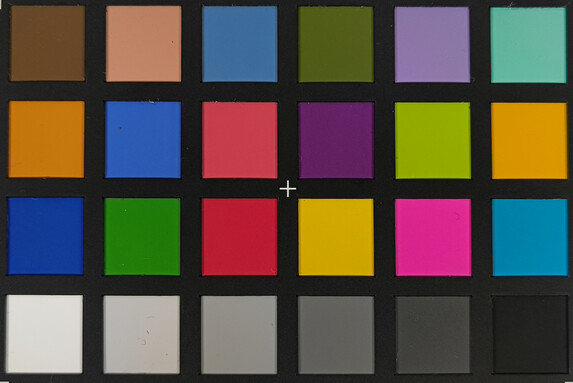
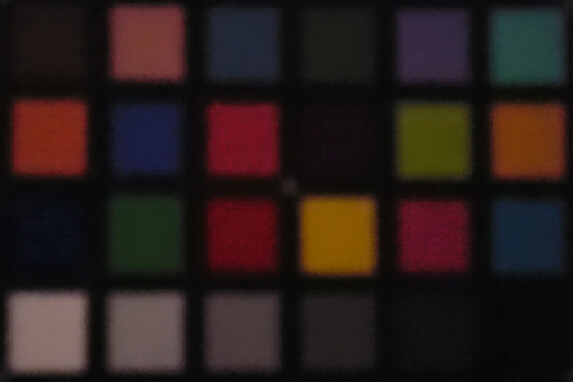
Accessories and Warranty - The charger costs extra
The flat packaging of the Nothing Phone (2a) makes it immediately clear that the box cannot include a charger. Instead, the device comes with a USB-C cable, a SIM tool, and a booklet with safety and warranty information. The Nothing webshop sells a protective case (£25), a 45-W charger (£35) and earbuds (from £99).
Nothing provides a 24-month warranty within the EU.
Input devices & operation - Nothing Phone (2a) with optical fingerprint reader
The Nothing Phone (2a) offers smooth operation. When using it, you wouldn't notice you're using a smartphone with mid-range hardware as navigating the menu and using apps feels as smooth as on a top-range device. Only very rarely will you notice a short lag, which does not impact the overall impression. The vibration motor gives precise feedback.
The smartphone supports biometric authentication through the optical fingerprint scanner, which is both quick and reliable. The same goes for face recognition via the front camera, though this only uses 2D images and can easily be tricked.
Display - 120-Hz AMOLED with four-figure brightness
The Nothing Phone (2a)'s AMOLED panel uses a touch sampling rate of 240 Hz and has a resolution of 2412 x 1084p (20:9 screen ratio). The refresh rate is automatically adjusted within a range of 30 to 120 Hz according to the standard settings. Users can also change these settings to stick to a standard 60 or 120 Hz if preferred. The display supports HDR10, HDR10+ and HLG.
The AMOLED panel has a maximum brightness of 1,300 nits according to Nothing. The brightness levels we measured weren't quite that high, but the display still is very bright. We measured an average brightness of 1042 nits and a maximum of 1070 nits on a pure white background. The APL18 measurement (evenly distributed light and dark areas) and HDR result in similar maximum brightness levels of 1023 nits and 1041 nits, respectively. The lowest brightness level had a brightness of 2.48 nits.
The AMOLED panel flickers very evenly across the entire brightness spectrum at a low 90 Hz. The screen also uses a dimming frequency of 2160 Hz to balance out the PWM flickering. This should make it less of an issue or come close to being unnoticeable even for sensitive users.
| |||||||||||||||||||||||||
Brightness Distribution: 96 %
Center on Battery: 1033 cd/m²
Contrast: ∞:1 (Black: 0 cd/m²)
ΔE Color 1.6 | 0.5-29.43 Ø5
ΔE Greyscale 1.2 | 0.57-98 Ø5.3
99.3% sRGB (Calman 2D)
Gamma: 2.07
| Nothing Phone (2a) AMOLED, 2412x1084, 6.70 | Google Pixel 7a OLED, 2400x1080, 6.10 | Nothing Phone (2) OLED, 2412x1080, 6.70 | Motorola Edge 40 Neo pOLED, 2400x1080, 6.55 | Samsung Galaxy A55 5G Super AMOLED, 2340x1080, 6.60 | Xiaomi Redmi Note 13 Pro+ 5G AMOLED, 2712x1220, 6.67 | |
|---|---|---|---|---|---|---|
| Screen | -0% | 0% | -35% | -7% | 11% | |
| Brightness middle | 1033 | 1006 -3% | 951 -8% | 966 -6% | 962 -7% | 1240 20% |
| Brightness | 1042 | 1010 -3% | 948 -9% | 957 -8% | 967 -7% | 1233 18% |
| Brightness Distribution | 96 | 95 -1% | 98 2% | 97 1% | 99 3% | 98 2% |
| Black Level * | ||||||
| Colorchecker dE 2000 * | 1.6 | 1.1 31% | 1 37% | 1.87 -17% | 1.6 -0% | 1.1 31% |
| Colorchecker dE 2000 max. * | 2.5 | 2.5 -0% | 2.2 12% | 4.34 -74% | 2.6 -4% | 2.2 12% |
| Greyscale dE 2000 * | 1.2 | 1.5 -25% | 1.6 -33% | 2.5 -108% | 1.5 -25% | 1.4 -17% |
| Gamma | 2.07 106% | 2.25 98% | 2.203 100% | 2.272 97% | 2.13 103% | 2.21 100% |
| CCT | 6482 100% | 6531 100% | 6516 100% | 6582 99% | 6382 102% | 6669 97% |
* ... smaller is better
Screen Flickering / PWM (Pulse-Width Modulation)
| Screen flickering / PWM detected | 90 Hz | ||
The display backlight flickers at 90 Hz (worst case, e.g., utilizing PWM) . The frequency of 90 Hz is very low, so the flickering may cause eyestrain and headaches after extended use. In comparison: 53 % of all tested devices do not use PWM to dim the display. If PWM was detected, an average of 17853 (minimum: 5 - maximum: 3846000) Hz was measured. | |||
Measurements with fixed zoom level and different brightness settings
Our measurements using the spectrophotometer and the Calman analysis software show that the screen can reproduce colors and grayscales very accurately. The AMOLED panel achieves the best image quality when the color profile in the display settings is set to Standard instead of the preset Vivid.
Display Response Times
| ↔ Response Time Black to White | ||
|---|---|---|
| 1.4 ms ... rise ↗ and fall ↘ combined | ↗ 0.645 ms rise | |
| ↘ 0.7525 ms fall | ||
| The screen shows very fast response rates in our tests and should be very well suited for fast-paced gaming. In comparison, all tested devices range from 0.1 (minimum) to 240 (maximum) ms. » 4 % of all devices are better. This means that the measured response time is better than the average of all tested devices (21.5 ms). | ||
| ↔ Response Time 50% Grey to 80% Grey | ||
| 0.79 ms ... rise ↗ and fall ↘ combined | ↗ 0.3385 ms rise | |
| ↘ 0.455 ms fall | ||
| The screen shows very fast response rates in our tests and should be very well suited for fast-paced gaming. In comparison, all tested devices range from 0.2 (minimum) to 636 (maximum) ms. » 1 % of all devices are better. This means that the measured response time is better than the average of all tested devices (33.7 ms). | ||
The display has stable viewing angles and quickly adjusts to changing lighting conditions when used outdoors. We had no issues reading the screen even in very bright sunshine. We would not recommend deactivating the brightness sensor as we were only able to increase brightness to 687 nits manually.
Performance - Nothing Phone (2a) with MediaTek Dimensity 7200
The Nothing Phone (2a) is equipped with the MediaTek Dimensity 7200, a 4-nm SoC that runs on 2 ARM Cortex A715 performance cores that clock at up to 2.8 GHz. The second cluster consists of 6 ARM Cortex A510 energy-efficient cores which reach a maximum clock rate of 2 GHz.
The octa-core SoC enables the Nothing Phone (2a) to provide a solid mid-range performance. Still, its competitors such as the Google Pixel 7a, the Samsung Galaxy A55, and the Xiaomi Redmi Note 13 Pro+ 5G are a little faster.
| UL Procyon AI Inference for Android - Overall Score NNAPI | |
| Google Pixel 7a | |
| Xiaomi Redmi Note 13 Pro+ 5G | |
| Average MediaTek Dimensity 7200 (26315 - 28870, n=2) | |
| Nothing Phone (2a) | |
| Motorola Edge 40 Neo | |
| Average of class Smartphone (207 - 84787, n=149, last 2 years) | |
| Nothing Phone (2) | |
| Samsung Galaxy A55 5G | |
The GFXBench Car Chase onscreen test illustrates that the Nothing Phone (2a) is also capable of displaying graphically demanding games smoothly thanks to its ARM Mali-G610 MP4 GPU. More than 60 frames per second would be possible in many graphics benchmarks if the smartphone didn't set an FPS limit.
GFXBench (DX / GLBenchmark) 2.7: T-Rex Onscreen | 1920x1080 T-Rex Offscreen
GFXBench 3.0: on screen Manhattan Onscreen OGL | 1920x1080 1080p Manhattan Offscreen
GFXBench 3.1: on screen Manhattan ES 3.1 Onscreen | 1920x1080 Manhattan ES 3.1 Offscreen
GFXBench: on screen Car Chase Onscreen | 1920x1080 Car Chase Offscreen | on screen Aztec Ruins High Tier Onscreen | 2560x1440 Aztec Ruins High Tier Offscreen | on screen Aztec Ruins Normal Tier Onscreen | 1920x1080 Aztec Ruins Normal Tier Offscreen | 3840x2160 4K Aztec Ruins High Tier Offscreen
| 3DMark / Wild Life Extreme Unlimited | |
| Nothing Phone (2) | |
| Google Pixel 7a | |
| Xiaomi Redmi Note 13 Pro+ 5G | |
| Nothing Phone (2a) | |
| Samsung Galaxy A55 5G | |
| Motorola Edge 40 Neo | |
| 3DMark / Wild Life Extreme | |
| Nothing Phone (2) | |
| Google Pixel 7a | |
| Xiaomi Redmi Note 13 Pro+ 5G | |
| Nothing Phone (2a) | |
| Samsung Galaxy A55 5G | |
| Motorola Edge 40 Neo | |
| 3DMark / Wild Life Unlimited Score | |
| Google Pixel 7a | |
| Xiaomi Redmi Note 13 Pro+ 5G | |
| Nothing Phone (2a) | |
| Samsung Galaxy A55 5G | |
| Motorola Edge 40 Neo | |
| 3DMark / Wild Life Score | |
| Google Pixel 7a | |
| Xiaomi Redmi Note 13 Pro+ 5G | |
| Nothing Phone (2a) | |
| Samsung Galaxy A55 5G | |
| Motorola Edge 40 Neo | |
| 3DMark / Sling Shot Extreme (ES 3.1) Unlimited Physics | |
| Samsung Galaxy A55 5G | |
| Google Pixel 7a | |
| Motorola Edge 40 Neo | |
| Nothing Phone (2a) | |
| Xiaomi Redmi Note 13 Pro+ 5G | |
| 3DMark / Sling Shot Extreme (ES 3.1) Unlimited Graphics | |
| Google Pixel 7a | |
| Xiaomi Redmi Note 13 Pro+ 5G | |
| Samsung Galaxy A55 5G | |
| Nothing Phone (2a) | |
| Motorola Edge 40 Neo | |
| 3DMark / Sling Shot Extreme (ES 3.1) Unlimited | |
| Google Pixel 7a | |
| Samsung Galaxy A55 5G | |
| Xiaomi Redmi Note 13 Pro+ 5G | |
| Nothing Phone (2a) | |
| Motorola Edge 40 Neo | |
| GFXBench (DX / GLBenchmark) 2.7 / T-Rex Onscreen | |
| Xiaomi Redmi Note 13 Pro+ 5G | |
| Samsung Galaxy A55 5G | |
| Motorola Edge 40 Neo | |
| Google Pixel 7a | |
| Nothing Phone (2) | |
| Nothing Phone (2a) | |
| GFXBench (DX / GLBenchmark) 2.7 / T-Rex Offscreen | |
| Nothing Phone (2) | |
| Google Pixel 7a | |
| Xiaomi Redmi Note 13 Pro+ 5G | |
| Nothing Phone (2a) | |
| Samsung Galaxy A55 5G | |
| Motorola Edge 40 Neo | |
| GFXBench 3.0 / Manhattan Onscreen OGL | |
| Google Pixel 7a | |
| Xiaomi Redmi Note 13 Pro+ 5G | |
| Samsung Galaxy A55 5G | |
| Motorola Edge 40 Neo | |
| Nothing Phone (2) | |
| Nothing Phone (2a) | |
| GFXBench 3.0 / 1080p Manhattan Offscreen | |
| Nothing Phone (2) | |
| Google Pixel 7a | |
| Xiaomi Redmi Note 13 Pro+ 5G | |
| Nothing Phone (2a) | |
| Samsung Galaxy A55 5G | |
| Motorola Edge 40 Neo | |
| GFXBench 3.1 / Manhattan ES 3.1 Onscreen | |
| Nothing Phone (2) | |
| Nothing Phone (2a) | |
| Samsung Galaxy A55 5G | |
| Google Pixel 7a | |
| Xiaomi Redmi Note 13 Pro+ 5G | |
| Motorola Edge 40 Neo | |
| GFXBench 3.1 / Manhattan ES 3.1 Offscreen | |
| Nothing Phone (2) | |
| Google Pixel 7a | |
| Xiaomi Redmi Note 13 Pro+ 5G | |
| Nothing Phone (2a) | |
| Samsung Galaxy A55 5G | |
| Motorola Edge 40 Neo | |
| GFXBench / Car Chase Onscreen | |
| Nothing Phone (2) | |
| Google Pixel 7a | |
| Nothing Phone (2a) | |
| Samsung Galaxy A55 5G | |
| Xiaomi Redmi Note 13 Pro+ 5G | |
| Motorola Edge 40 Neo | |
| GFXBench / Car Chase Offscreen | |
| Nothing Phone (2) | |
| Google Pixel 7a | |
| Xiaomi Redmi Note 13 Pro+ 5G | |
| Nothing Phone (2a) | |
| Samsung Galaxy A55 5G | |
| Motorola Edge 40 Neo | |
| GFXBench / Aztec Ruins High Tier Onscreen | |
| Nothing Phone (2) | |
| Google Pixel 7a | |
| Nothing Phone (2a) | |
| Samsung Galaxy A55 5G | |
| Xiaomi Redmi Note 13 Pro+ 5G | |
| Motorola Edge 40 Neo | |
| GFXBench / Aztec Ruins High Tier Offscreen | |
| Nothing Phone (2) | |
| Google Pixel 7a | |
| Xiaomi Redmi Note 13 Pro+ 5G | |
| Nothing Phone (2a) | |
| Samsung Galaxy A55 5G | |
| Motorola Edge 40 Neo | |
| GFXBench / Aztec Ruins Normal Tier Onscreen | |
| Nothing Phone (2) | |
| Google Pixel 7a | |
| Nothing Phone (2a) | |
| Samsung Galaxy A55 5G | |
| Xiaomi Redmi Note 13 Pro+ 5G | |
| Motorola Edge 40 Neo | |
| GFXBench / Aztec Ruins Normal Tier Offscreen | |
| Nothing Phone (2) | |
| Google Pixel 7a | |
| Xiaomi Redmi Note 13 Pro+ 5G | |
| Nothing Phone (2a) | |
| Samsung Galaxy A55 5G | |
| Motorola Edge 40 Neo | |
| GFXBench / 4K Aztec Ruins High Tier Offscreen | |
| Nothing Phone (2) | |
| Google Pixel 7a | |
| Xiaomi Redmi Note 13 Pro+ 5G | |
| Nothing Phone (2a) | |
| Samsung Galaxy A55 5G | |
| Motorola Edge 40 Neo | |
Browsing the web with the Nothing Phone (2a) feels just as fast and smooth as performing other operations. The browser benchmarks don't confirm this impression, though, positioning the smartphone in the lower mid-range of our field of comparison devices.
| Jetstream 2 - Total Score | |
| Nothing Phone (2) (Chrome 114) | |
| Samsung Galaxy A55 5G (Chrome 123) | |
| Average of class Smartphone (13.8 - 351, n=171, last 2 years) | |
| Google Pixel 7a (Chrome 114) | |
| Motorola Edge 40 Neo (Chrome 118) | |
| Xiaomi Redmi Note 13 Pro+ 5G (Chrome 122.0.6261.90) | |
| Average MediaTek Dimensity 7200 (76.6 - 83.8, n=2) | |
| Nothing Phone (2a) (Firefox 124.2.0) | |
| Speedometer 2.0 - Result | |
| Nothing Phone (2) (Chrome 114) | |
| Google Pixel 7a (Chrome 114) | |
| Samsung Galaxy A55 5G (Chrome 123) | |
| Xiaomi Redmi Note 13 Pro+ 5G (Chrome 122.0.6261.90) | |
| Average of class Smartphone (14.9 - 445, n=155, last 2 years) | |
| Average MediaTek Dimensity 7200 (104 - 112, n=2) | |
| Nothing Phone (2a) (Chrome 123.0.6312.99) | |
| Motorola Edge 40 Neo (Chrome 118) | |
| WebXPRT 4 - Overall | |
| Nothing Phone (2) (Chrome 114) | |
| Samsung Galaxy A55 5G (Chrome 123) | |
| Nothing Phone (2a) (Firefox 124.2.0) | |
| Google Pixel 7a (Chrome 114) | |
| Motorola Edge 40 Neo (Chrome 118) | |
| Average MediaTek Dimensity 7200 (86 - 125, n=2) | |
| Average of class Smartphone (22 - 202, n=160, last 2 years) | |
| Xiaomi Redmi Note 13 Pro+ 5G (Chrome 122.0.6261.90) | |
| WebXPRT 3 - Overall | |
| Nothing Phone (2) (Chrome 114) | |
| Nothing Phone (2a) (Firefox 124.2.0) | |
| Average MediaTek Dimensity 7200 (92 - 185, n=2) | |
| Samsung Galaxy A55 5G (Chrome 123) | |
| Average of class Smartphone (39 - 304, n=120, last 2 years) | |
| Motorola Edge 40 Neo (Chrome 118) | |
| Xiaomi Redmi Note 13 Pro+ 5G (Chrome 122.0.6261.90) | |
| Octane V2 - Total Score | |
| Nothing Phone (2) (Chrome 114) | |
| Google Pixel 7a (Chrome 114) | |
| Samsung Galaxy A55 5G (Chrome 123) | |
| Xiaomi Redmi Note 13 Pro+ 5G (Chrome 122.0.6261.90) | |
| Motorola Edge 40 Neo (Chrome 118) | |
| Average of class Smartphone (2228 - 89112, n=214, last 2 years) | |
| Average MediaTek Dimensity 7200 (18562 - 39060, n=2) | |
| Nothing Phone (2a) (Firefox 124.2.0) | |
| Mozilla Kraken 1.1 - Total | |
| Nothing Phone (2a) (Firefox 124.2.0) | |
| Average of class Smartphone (388 - 9999, n=171, last 2 years) | |
| Average MediaTek Dimensity 7200 (1296 - 1570, n=2) | |
| Motorola Edge 40 Neo (Chrome 118) | |
| Xiaomi Redmi Note 13 Pro+ 5G (Chrome 122.0.6261.90) | |
| Samsung Galaxy A55 5G (Chrome 123) | |
| Google Pixel 7a (Chrome 114) | |
| Nothing Phone (2) (Chrome 114) | |
* ... smaller is better
The UFS 3.1 storage device in the Nothing Phone (2a) offers very standard performance. Apps run smoothly and data transfers don't take long.
| Nothing Phone (2a) | Google Pixel 7a | Nothing Phone (2) | Motorola Edge 40 Neo | Samsung Galaxy A55 5G | Xiaomi Redmi Note 13 Pro+ 5G | Average 256 GB UFS 3.1 Flash | Average of class Smartphone | |
|---|---|---|---|---|---|---|---|---|
| AndroBench 3-5 | 8% | 46% | -3% | 6% | 36% | 23% | 11% | |
| Sequential Read 256KB | 1028.37 | 1624.39 58% | 1949.5 90% | 1004.4 -2% | 1688.53 64% | 1921.64 87% | 1759 ? 71% | 1513 ? 47% |
| Sequential Write 256KB | 952 | 996.44 5% | 1517.6 59% | 930.9 -2% | 831.44 -13% | 1702.4 79% | 1130 ? 19% | 1121 ? 18% |
| Random Read 4KB | 273.19 | 229.44 -16% | 287.5 5% | 279.5 2% | 351.47 29% | 248.21 -9% | 282 ? 3% | 248 ? -9% |
| Random Write 4KB | 311.8 | 263.81 -15% | 403.8 30% | 284.1 -9% | 132.11 -58% | 265.29 -15% | 309 ? -1% | 273 ? -12% |
Games - Smooth performance almost guaranteed
The Gamebench app helps us evaluate the Nothing Phone (2a)'s performance when gaming. The phone does a good job when playing Genshin Impact and manages an average frame rate of 34.6 FPS when playing this graphically very demanding title at maximum settings. The frame rate does drop occasionally during our test but recovers again soon enough. The same goes for Asphalt 9: Legends, which produces an even smoother experience with 59 FPS.
The tactical shooter game PUBG Mobile poses no issues for our smartphone. It may not achieve more than 40 FPS at HD settings, but this is only because PUBG Mobile won't allow higher frame rates at this setting.
Emissions - Maximum performance at the push of a button
Temperature
The Nothing Phone (2a) does heat up noticeably under full load, but it doesn't become uncomfortable to hold. After running a stress test (Burnout benchmark) for one hour, we measured a maximum surface temperature of 42.8 °C.
The Nothing Phone (2a) has a good grip on internal heat removal too. Our Wild Life stress tests by 3DMark show that it can almost always deliver its full performance even under continuous load.
(±) The maximum temperature on the upper side is 42.8 °C / 109 F, compared to the average of 35 °C / 95 F, ranging from 21.9 to 56 °C for the class Smartphone.
(±) The bottom heats up to a maximum of 41.6 °C / 107 F, compared to the average of 33.8 °C / 93 F
(+) In idle usage, the average temperature for the upper side is 28.2 °C / 83 F, compared to the device average of 32.7 °C / 91 F.
3DMark Wild Life stress test
| 3DMark | |
| Wild Life Stress Test Stability | |
| Samsung Galaxy A55 5G | |
| Motorola Edge 40 Neo | |
| Nothing Phone (2a) | |
| Xiaomi Redmi Note 13 Pro+ 5G | |
| Nothing Phone (2) | |
| Google Pixel 7a | |
| Wild Life Extreme Stress Test | |
| Nothing Phone (2a) | |
| Xiaomi Redmi Note 13 Pro+ 5G | |
| Motorola Edge 40 Neo | |
| Samsung Galaxy A55 5G | |
| Nothing Phone (2) | |
| Google Pixel 7a | |
Speakers
Nothing has equipped the Nothing Phone (2a) with stereo speakers that offer fairly balanced sound characteristics in the mid and high range and are particularly suitable for transmitting voices. Bass tones, however, are in short supply, as expected.
Users can connect external audio devices via USB-C or Bluetooth 5.3. The Nothing Phone (2a) supports a wide range of current Bluetooth codecs, including SBC, AAC, aptX, aptX HD, LDAC, Opus and LHDC V3/V4.
Nothing Phone (2a) audio analysis
(+) | speakers can play relatively loud (88.9 dB)
Bass 100 - 315 Hz
(-) | nearly no bass - on average 25.6% lower than median
(±) | linearity of bass is average (10.6% delta to prev. frequency)
Mids 400 - 2000 Hz
(+) | balanced mids - only 4.4% away from median
(+) | mids are linear (5.8% delta to prev. frequency)
Highs 2 - 16 kHz
(+) | balanced highs - only 4.5% away from median
(+) | highs are linear (4.4% delta to prev. frequency)
Overall 100 - 16.000 Hz
(±) | linearity of overall sound is average (18% difference to median)
Compared to same class
» 11% of all tested devices in this class were better, 7% similar, 82% worse
» The best had a delta of 12%, average was 38%, worst was 134%
Compared to all devices tested
» 32% of all tested devices were better, 8% similar, 60% worse
» The best had a delta of 4%, average was 25%, worst was 134%
Samsung Galaxy A55 5G audio analysis
(+) | speakers can play relatively loud (91.4 dB)
Bass 100 - 315 Hz
(-) | nearly no bass - on average 22.4% lower than median
(+) | bass is linear (6.2% delta to prev. frequency)
Mids 400 - 2000 Hz
(±) | reduced mids - on average 6.5% lower than median
(+) | mids are linear (5% delta to prev. frequency)
Highs 2 - 16 kHz
(±) | higher highs - on average 5.4% higher than median
(+) | highs are linear (3% delta to prev. frequency)
Overall 100 - 16.000 Hz
(±) | linearity of overall sound is average (17.6% difference to median)
Compared to same class
» 9% of all tested devices in this class were better, 7% similar, 84% worse
» The best had a delta of 12%, average was 38%, worst was 134%
Compared to all devices tested
» 29% of all tested devices were better, 8% similar, 63% worse
» The best had a delta of 4%, average was 25%, worst was 134%
Battery Life - Above-average
Energy consumption
The Nothing Phone (2a) has very inconspicuous consumption rates and is energy-efficient especially under load.
The Nothing phone can be recharged at up to 45 W via USB PD 3.0. Buyers will have to organize a suitable charger on their own as this is not included with the phone.
It took phone exactly 1 hour to fully recharge using a 65-watt charger from Ugreen. The battery reaches a charge level of 50 percent within 24 minutes and 90 percent after 45 minutes. The smartphone does not support wireless charging.
| Off / Standby | |
| Idle | |
| Load |
|
| Nothing Phone (2a) 5000 mAh | Google Pixel 7a 4385 mAh | Nothing Phone (2) 4700 mAh | Motorola Edge 40 Neo 5000 mAh | Samsung Galaxy A55 5G 5000 mAh | Xiaomi Redmi Note 13 Pro+ 5G 5000 mAh | Average MediaTek Dimensity 7200 | Average of class Smartphone | |
|---|---|---|---|---|---|---|---|---|
| Power Consumption | 8% | 3% | 3% | -6% | -23% | -11% | -0% | |
| Idle Minimum * | 0.81 | 0.62 23% | 0.9 -11% | 1 -23% | 0.85 -5% | 1.22 -51% | 1.015 ? -25% | 0.897 ? -11% |
| Idle Average * | 2.01 | 0.87 57% | 1.1 45% | 1.2 40% | 1.51 25% | 1.47 27% | 1.74 ? 13% | 1.453 ? 28% |
| Idle Maximum * | 2.07 | 0.95 54% | 1.4 32% | 1.3 37% | 1.71 17% | 1.58 24% | 1.825 ? 12% | 1.626 ? 21% |
| Load Average * | 4.16 | 6.11 -47% | 5 -20% | 5.2 -25% | 4.87 -17% | 8.09 -94% | 6.13 ? -47% | 5.56 ? -34% |
| Load Maximum * | 7.91 | 11.81 -49% | 10.4 -31% | 9.2 -16% | 11.73 -48% | 9.49 -20% | 8.7 ? -10% | 8.35 ? -6% |
* ... smaller is better
Energy consumption: Geekbench (150 cd/m²)
Energy consumption: GFXBench (150 cd/m²)
Battery life
In order to determine the battery life as realistically as possible, the Nothing Phone (2a) has to undergo two standardised tests, each of which is carried out with the screen brightness set to 150 cd/m².
The smartphone manages almost 17 hours of simulated web surfing, putting it well ahead of the comparison devices. The same result is achieved in the second battery test, when playing an HD video in a continuous loop. Here, the battery of the Nothing Phone (2a) doesn't run out until after more than 25 hours, which is also an above-average result. In practice, the smartphone should therefore easily last one to two days away from the power socket, even with intensive use.
| Nothing Phone (2a) 5000 mAh | Google Pixel 7a 4385 mAh | Nothing Phone (2) 4700 mAh | Motorola Edge 40 Neo 5000 mAh | Samsung Galaxy A55 5G 5000 mAh | Xiaomi Redmi Note 13 Pro+ 5G 5000 mAh | |
|---|---|---|---|---|---|---|
| Battery Runtime | -25% | -17% | -4% | -8% | -15% | |
| Reader / Idle | 2522 | 1328 -47% | 1744 -31% | 2444 -3% | 2202 -13% | 1586 -37% |
| H.264 | 1513 | 1224 -19% | 1245 -18% | 1232 -19% | 1511 0% | 937 -38% |
| WiFi v1.3 | 1011 | 821 -19% | 909 -10% | 864 -15% | 1077 7% | 913 -10% |
| Load | 293 | 252 -14% | 268 -9% | 355 21% | 220 -25% | 373 27% |
Pros
Cons
Verdict on the Nothing Phone (2a)
Nothing remains true to its design language for its most affordable smartphone yet. The Nothing Phone (2a) clearly stands out with its transparent back cover and the embedded Glyph interface. Combine this with powerful connectivity and you get a smartphone that may not be able to outplay its mid-range competitors in terms of tech but certainly provides great value for its price.
The Nothing Phone (2a) has an impressive 120-Hz AMOLED panel that reaches four-figure brightness levels and offers excellent colors. Its other strengths include its long battery life, its dual camera, which is good for mid-range standards, and its decent performance that will not only see you through your everyday needs but can also support demanding mobile games. We also give the phone a clear thumbs up for its workmanship.
The Nothing Phone (2a) with its Glyph interface certainly is an eye-catcher and does not disappoint in terms of connectivity or performance.
Of course Nothing had to make certain cuts in order to make its newest smartphone this affordable. The most notable difference is the plastic back cover which is susceptible to both fingerprints and scratches. The Nothing Phone (2a) doesn't support eSIMS or wireless charging and comes without a charger.
Alternatives to the Nothing Phone (2a) include the Google Pixel 7a, the Samsung Galaxy A55 and the Xiaomi Redmi Note 13 Pro+ 5G. All three models are in the same price range and offer similar connectivity. And unlike the Nothing phone, they are also entirely dust and water resistant.
Price and Availability
The Nothing Phone (2a) is availabe from the Nothing webshop at a starting price of 320. In the US, the Nothing Phone (2a) is currently only available as part of the US Developer Program.
Nothing Phone (2a)
-
04/24/2024 v7
Manuel Masiero
Transparency
The present review sample was made available to the author as a loan by the manufacturer or a shop for the purposes of review. The lender had no influence on this review, nor did the manufacturer receive a copy of this review before publication. There was no obligation to publish this review.


 Deutsch
Deutsch English
English Español
Español Français
Français Italiano
Italiano Nederlands
Nederlands Polski
Polski Português
Português Русский
Русский Türkçe
Türkçe Svenska
Svenska Chinese
Chinese Magyar
Magyar